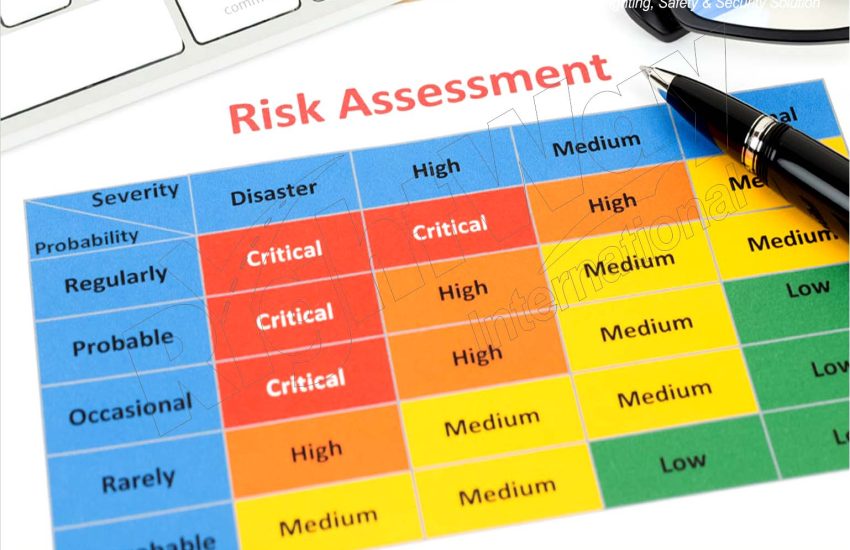Guide to Risk Analysis Risk analysis is an essential process for businesses. It helps them identify, evaluate, and mitigate potential risks that could disrupt operations, harm assets, or threaten overall success. Whether you’re managing a large corporation or a small startup, understanding risk analysis is crucial for protecting your business against unforeseen challenges. In this article, we’ll break down what risk analysis is, why it’s vital, and how businesses can build a strong risk management strategy.
What is Risk Analysis?
Guide to Risk Analysis Risk analysis, also called risk assessment, involves identifying, evaluating, and prioritizing risks that could negatively impact a business or project. The primary goal is to mitigate these risks by implementing appropriate strategies and controls. Risk analysis enables businesses to predict and prepare for uncertainties, improve decision-making, and reduce potential losses.
Why is Risk Analysis Important for Businesses?
1. Identifies Potential Threats
Risk analysis helps businesses spot both internal and external threats that could harm operations. By identifying risks early, companies can act quickly to address them before they escalate.
2. Improves Decision-Making
A thorough risk analysis provides decision-makers with valuable data. With a clear understanding of potential risks, businesses can make informed decisions that align with their goals.
3. Enhances Business Continuity
By assessing and mitigating risks, businesses strengthen their ability to withstand disruptions. This ensures that operations continue smoothly even during crises or unexpected events.
4. Ensures Compliance
Many industries require businesses to conduct risk assessments to meet regulatory standards. Proper risk analysis helps companies comply with laws, avoid penalties, and prevent legal issues.
5. Optimizes Resource Allocation
Risk analysis allows businesses to allocate resources more effectively. By reducing exposure to unnecessary risks, businesses can focus on areas that offer the highest returns.
Types of Risks in Risk Analysis
Risk analysis addresses a variety of risks that can impact a business. Below are the primary categories:
- Operational Risks: These risks stem from internal processes, systems, or human resources. Examples include equipment breakdowns, supply chain disruptions, and employee turnover.
- Financial Risks: These involve issues such as market volatility, liquidity concerns, and credit risks that can affect a company’s financial health.
- Strategic Risks: These risks arise from changes in consumer preferences, competition, or market conditions that can affect a company’s strategic direction.
- Compliance Risks: Businesses face the risk of non-compliance with laws, regulations, or industry standards, which can lead to fines or reputational damage.
- Reputational Risks: Negative publicity, poor customer service, or product recalls can damage a company’s reputation, leading to a loss of consumer trust.
- Environmental Risks: Factors such as natural disasters, climate change, and environmental regulations can significantly impact a business.
Steps in Conducting Risk Analysis
1. Risk Identification
The first step in risk analysis is to identify potential risks. Businesses can achieve this through brainstorming, reviewing past incidents, and analyzing industry trends.
2. Risk Assessment
Once identified, risks should be assessed to determine their likelihood and potential impact. This helps businesses prioritize which risks to address first and which ones require less immediate attention.
3. Risk Mitigation
After evaluating risks, businesses need to implement strategies to minimize or eliminate them. Strategies include risk avoidance, transfer (e.g., insurance), reduction (e.g., safety protocols), and acceptance (e.g., accepting minor risks).
4. Monitor and Review
Risk analysis is an ongoing process. Businesses must regularly monitor their risk management strategies to ensure they remain effective and adjust them based on new threats or changing circumstances.
Risk Analysis Tools and Techniques
Several tools and techniques can help businesses conduct effective risk analysis:
- SWOT Analysis: This method identifies a company’s strengths, weaknesses, opportunities, and threats, helping businesses understand both internal and external risks.
- Failure Mode and Effects Analysis (FMEA): FMEA helps identify potential failure points in processes or systems and evaluate their impact.
- Monte Carlo Simulation: This statistical technique uses random sampling to estimate the likelihood of various outcomes in complex situations.
- Risk Matrix: A risk matrix categorizes risks based on their likelihood and impact. It helps prioritize actions based on risk severity.
- Scenario Analysis: This technique explores different scenarios to assess how various variables affect business outcomes.
Risk Mitigation Strategies
Once risks are assessed, businesses must implement mitigation strategies. Common strategies include:
1. Diversification
Spreading investments across different markets or products helps reduce the impact of a failure in one area.
2. Insurance
Businesses can purchase insurance to protect against financial losses caused by unforeseen events like natural disasters or lawsuits.
3. Outsourcing
Outsourcing certain business functions can reduce operational risks, allowing businesses to focus on their core competencies.
4. Contingency Planning
Developing a detailed contingency plan helps businesses respond quickly to emergencies or unexpected disruptions.
5. Training and Awareness
Educating employees on risk management practices helps prevent errors that might lead to significant risks.
Risk Analysis Best Practices
To ensure effective risk analysis and risk management, consider these best practices:
1. Involve Key Stakeholders
Engage senior management and department heads in the risk analysis process to ensure all risks are identified and addressed.
2. Leverage Data and Analytics
Use data analytics tools to gather and analyze relevant data, allowing for more precise risk identification and evaluation.
3. Review and Update Regularly
Risk environments change. Regularly reviewing and updating risk assessments and mitigation strategies ensures businesses stay prepared.
4. Document Everything
Keep thorough records of the risk analysis process, including identified risks, assessments, and mitigation measures.
5. Cultivate a Risk-Aware Culture
Encourage employees to report potential risks and contribute to the company’s overall risk management efforts.
Conclusion
Guide to Risk Analysis In today’s rapidly changing business environment, risk analysis is more important than ever. By identifying, assessing, and mitigating risks, businesses can safeguard their operations, protect assets, and thrive in the face of uncertainty. Implementing a solid risk management strategy not only helps businesses avoid setbacks but also positions them for long-term success.


